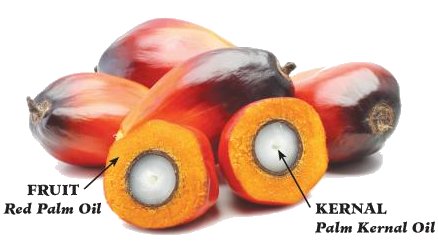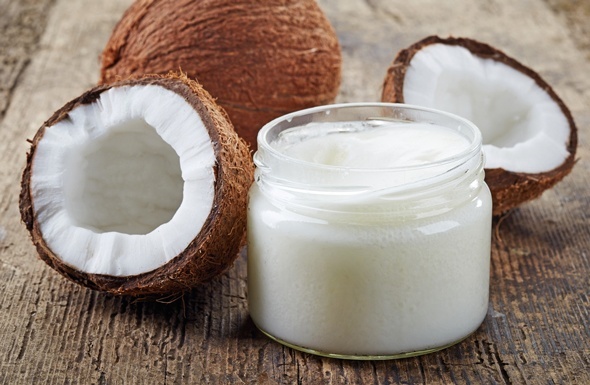| Hint | Food | 맛과향 | Diet | Health | 불량지식 | 자연과학 | My Book | 유튜브 | Frims | 원 료 | 제 품 | Update | Site |
|
식품, 원료 ≫ 지방 유지종류 : 팜유, 팜 올레인유 유지 종류 - 대두유(콩기름), 옥배유(옥수수) - 올리브유 - 팜유, 팜올레인유, 야자유 - 생크림, 버터 - 피마자유 : 비식용  ● 종려 나무과에 속한 팜 열매에서 압착방식을 통해 추출 된 식물성 오일 이다. ● 나무 한그루당 약 3000천개 가량의 열매에서, 40kg의 팜오일을 생산한다. ● 팜유에서 고체부분은 스테아린, 액체인 부분은 올레인이라고 하는데 정제, 분획 공정을 거치면 팜 스테아린과 , 팜 올레인으로 분리된다 ● 식물성 유지이므로 당연히 콜레스테롤과 트랜스지방은 없다 ● 팔미트산과 올레산이 주성분이라 튀김과 같은 고온에 안정하다  팜 올레인유 1. 트랜스 지방 0% 팜 올레인유는 자체적으로 산패 억제 기능을 보유하고 있기 때문에 트랜스지방산을 생성하지 않는다. 2. 비타민 E 다량 함유 팜 올레인유에는 산화 작용을 방지하는 비타민E가 다량(약 1,200ppm)으로 들어있어 산화적 스트레스에 대응하고 빈혈에 좋으며, 심장병을 예방하는 효과가 있다. 3. 카로티노이드 함량 당근의 15배 팜 올레인유에는 천연 카로티노이드 함량이 700~1,000ppm으로 당근의 15배나 들어있어 항산화 작용이 있다 4. 콜레스테롤 0 팜 올레인의 지방산 조성은 포화지방산이 45%이고, 불포화지방산을 55%로 이루어져 있다. 이 오일조직은 레놀린산 함유량의 11% 정도인 일일 필수지방산 권장량과 같다. 그것은 식물을 원료로 만든 식용유이기 때문에 본질적으로 콜레스테롤이 없다. 5. 올레인산 다량 함유 팜 올레인유에는 다량의 오메가 6, 오메가 9의 올레산이 함유되어 있는데, 이 오메가 6와 오메가 9은 상호 시너지 작용으로 피부의 영양 상태를 좋게 하며, 아토피 피부염을 약화시키는데 탁월한 효과도 있다고 한다. ● 팜 올레인의 조리상 특성 - 포화지방(C16), 올레산(C18-1)이 주성분이라 다가 불포화지방이 많은 다른 식용유에 비해 산화 안정성이 매우 높다 (산화안정성 액상식용유 : 13~16시간, 팜오일 : 60~70시간) - 튀겨진 식품을 더 바삭바삭 하고 고소하게 하는 장점이 있다. - 음식고유의 맛과 영양을 오랫동안 유지시켜준다. - 튀김요리시 연기 발생이 적고, 건강에 해로운 폴리머 형성이 적다   팜유와 야자유는 매우 다르다  하지만 팜열매 가운데 있는 팜핵유는 야자유와 조성이 거의 같다 In some ways coconut and palm oils are very similar. They are unique in that they are vegetable oils that contain a high percentage of saturated fat. Because of this they are highly resistant to oxidation and make excellent cooking oils. Because of their high saturated fat content they both have high melting points and may be solid at room temperature. Both are products of palm trees, hence they are often referred to as the tropical oils. Both oils are good and offer many health benefits. This, however, is where the similarity ends. Coconut and palm oils are very different from one another in chemical composition, appearance, and character. Even their influence on health is uniquely different. They come from different species of palm and from different parts of the plant. Coconut oil comes from the seed of the coconut palm (Cocos nucifera). Palm oil comes from the fleshy fruit of the oil palm (Elaesis guineensis). If you see a bottle of virgin palm oil and virgin coconut oil sitting side by side in a store you will quickly notice a distinct difference. In the relatively cool temperature of the store both oils will be in their solid form. The virgin coconut oil will be a pure white. The virgin palm oil, however, will be a deep orange-red. The red color is from carotenes. Carotenes are plant pigments that give fruits and vegetables their red, yellow, and orange colors. When melted, the palm oil takes on a dark red color. For this reason, virgin palm oil is called “red” palm oil. Red palm oil is the premiere form of palm oil just as virgin coconut oil is the best. Like virgin coconut oil, red palm oil has undergone minimal processing and is considered to be of superior quality to ordinary palm oil. Unlike coconut oil, palm oil does not have a sharp melting point. Coconut oil melts at temperatures above 76 degrees F (24 C). Palm oil has a much more gradual melting point. So it may be liquid or solid or a bit of both over a range of temperatures. This can give the oil a mottled appearance with a combination of colors ranging from light orange to dark red. You can have two bottles of red palm oil sitting side by side in the same room and one will be mostly liquid and the other mostly solid. They can remain like that for days or even weeks. The reason for the difference in melting point between coconut oil and palm oil is due to the very different chemical makeup of the oils. Coconut oil consists of 92 percent saturated fatty acids, 6 percent monounsaturated fatty acids, and 2 percent polyunsaturated fatty acids. About 63 percent of the fatty acids are medium-chain fatty acids (MCFA). This high percentage of MCFA is principally responsible for giving coconut oil is sharp melting point. In contrast, palm oil has 50 percent saturated fatty acids, 40 percent monounsaturated fatty acids, and 10 percent polyunsaturated fatty acids. It contains less than 0.5 percent MCFA. The type of fatty acids in palm oil is more varied so the melting character is less precise. It is the MCFA in coconut oil that gives it most of its remarkable healing properties and makes it uniquely different from other oils. Palm oil does not have this unique feature. The primary saturated fatty acids in palm oil are palmitic acid (44 percent) and stearic acid (4 percent). These are common saturated fats found in all vegetable oils. What makes palm oil special, and especially red palm oil, is not so much the fatty acids as it is the nutrient content. Red palm oil contains more phytonutrients than any other dietary oil. Many of these nutrients are powerful antioxidants, which protect the oil from oxidation and make it ideal for cooking. Red palm oil contains a synergistic mix of vitamin E, vitamin K, CoQ10, alpha-carotene, beta-carotene, lycopene, and about 20 other carotenes. In addition to ordinary vitamin E, it contains a super powerful form of vitamin E known as tocotrienol. This form of vitamin is 60 times more potent than ordinary vitamin E. Another oil which is often confused with palm oil is palm kernel oil. Palm oil and palm kernel oil come from the same plant. Palm oil is extracted from the red, fleshy fruit of the oil palm tree. Palm kernel oil comes from the seed or kernel inside the fruit. These two oils are very different from each other. Palm kernel oil is very similar in composition to coconut oil and has basically the same health benefits. Like coconut oil, it melts at about 76 degrees F (24 C) and is clear when melted and white when solid. All three tropical oils—coconut, palm, and palm kernel—are healthy oils and are excellent for use in cooking. 
|
||||
|
|
|||